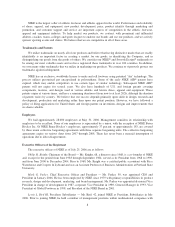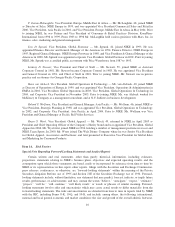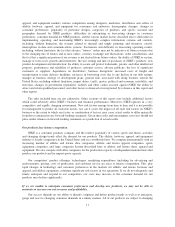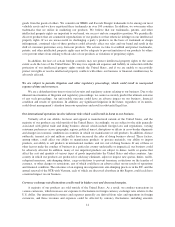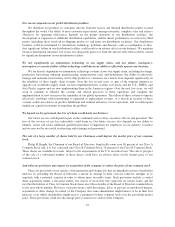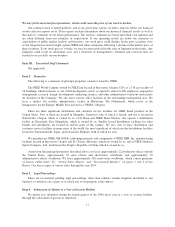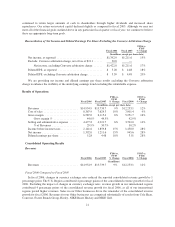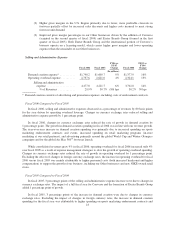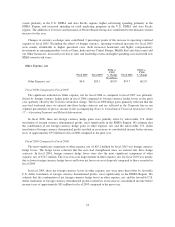Nike 2006 Annual Report Download - page 17
Download and view the complete annual report
Please find page 17 of the 2006 Nike annual report below. You can navigate through the pages in the report by either clicking on the pages listed below, or by using the keyword search tool below to find specific information within the annual report.Our success depends on our global distribution facilities.
We distribute our products to customers directly from the factory and through distribution centers located
throughout the world. Our ability to meet customer expectations, manage inventory, complete sales and achieve
objectives for operating efficiencies depends on the proper operation of our distribution facilities, the
development or expansion of additional distribution capabilities, and the timely performance of services by third
parties (including those involved in shipping product to and from our distribution facilities). Our distribution
facilities could be interrupted by information technology problems and disasters such as earthquakes or fires.
Any significant failure in our distribution facilities could result in an adverse affect on our business. We maintain
business interruption insurance, but it may not adequately protect us from the adverse effect that could be caused
by significant disruptions in our distribution facilities.
We rely significantly on information technology in our supply chain, and any failure, inadequacy,
interruption or security failure of that technology could harm our ability to effectively operate our business.
We are heavily dependent on information technology systems across our supply chain, including for design,
production, forecasting, ordering, manufacturing, transportation, sales, and distribution. Our ability to effectively
manage and maintain our inventory and to ship products to customers on a timely basis depends significantly on
the reliability of these supply chain systems. Over the last several years, as part of the ongoing initiative to
upgrade our worldwide supply chain, we have implemented new systems in Canada, and the U.S., EMEA, and
Asia Pacific regions and are now implementing them in the Americas regions. Over the next few years, we will
work to continue to enhance the systems and related processes in these operations and complete the
implementation of new systems in the remainder of our global operations. The failure of these systems to operate
effectively, problems with transitioning to upgraded or replacement systems, or a breach in security of these
systems could cause delays in product fulfillment and reduced efficiency of our operations, and it could require
significant capital investments to remediate the problem.
We depend on key personnel, the loss of whom would harm our business.
Our future success will depend in part on the continued service of key executive officers and personnel. The
loss of the services of any key individuals could harm us. Our future success also depends on our ability to
identify, attract and retain additional qualified personnel. Competition for employees in our industry is intense
and we may not be successful in attracting and retaining such personnel.
The sale of a large number of shares held by our Chairman could depress the market price of our common
stock.
Philip H. Knight, the Chairman of our Board of Directors, beneficially owns over 90 percent of our Class A
Common Stock and, if it was converted into Class B Common Stock, 24 percent of our Class B Common Stock.
These shares are available for resale, subject to the requirements of the U.S. securities laws. The sale or prospect
of the sale of a substantial number of these shares could have an adverse effect on the market price of our
common stock.
Anti-takeover provisions may impair an acquisition of the company or reduce the price of our common stock.
There are provisions of our articles of incorporation and Oregon law that are intended to protect shareholder
interests by providing the Board of Directors a means to attempt to deny coercive takeover attempts or to
negotiate with a potential acquirer in order to obtain more favorable terms. Such provisions include a control
share acquisition statute, a freezeout statute, two classes of stock that vote separately on certain issues, and the
fact that the holders of Class A Common Stock shares elect three-fourths of the Board of Directors rounded down
to the next whole number. However, such provisions could discourage, delay or prevent an unsolicited merger,
acquisition or other change in control of the Company that some shareholders might believe to be in their best
interests, or in which shareholders might receive a premium for their common stock over the prevailing market
price. These provisions could also discourage proxy contests for control of the Company.
16




